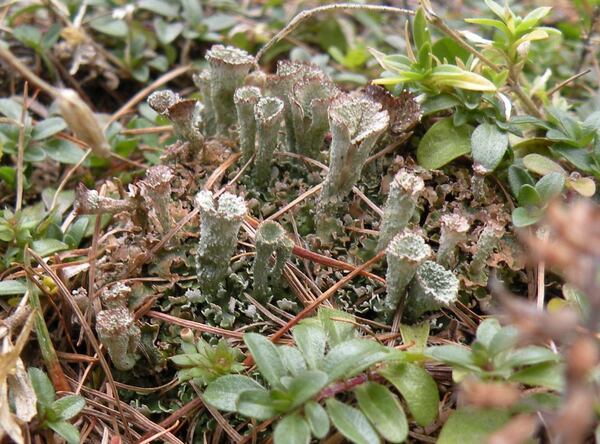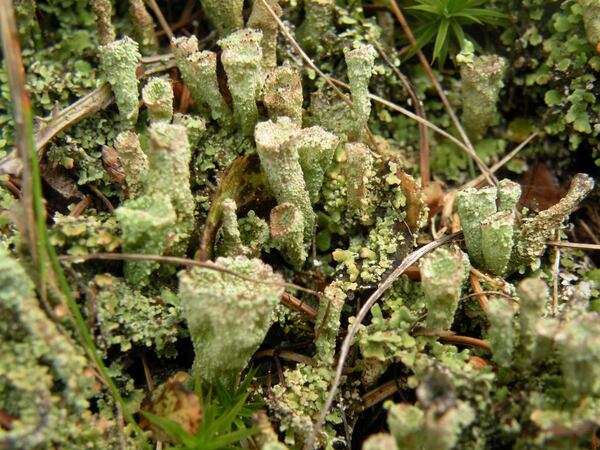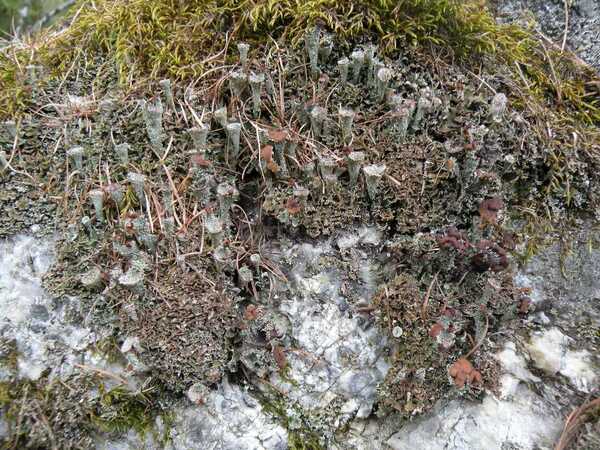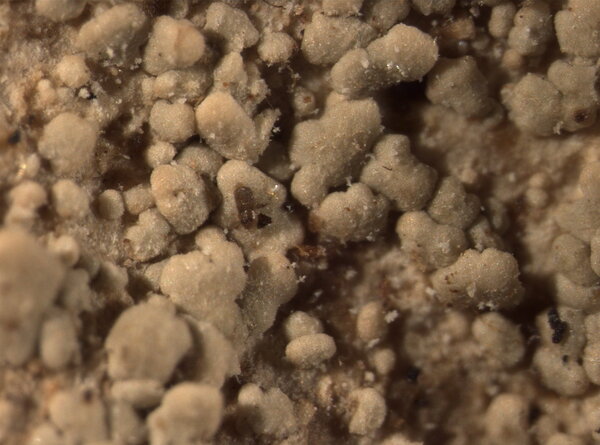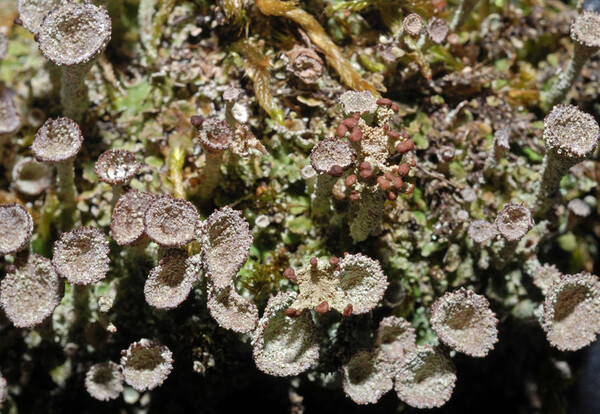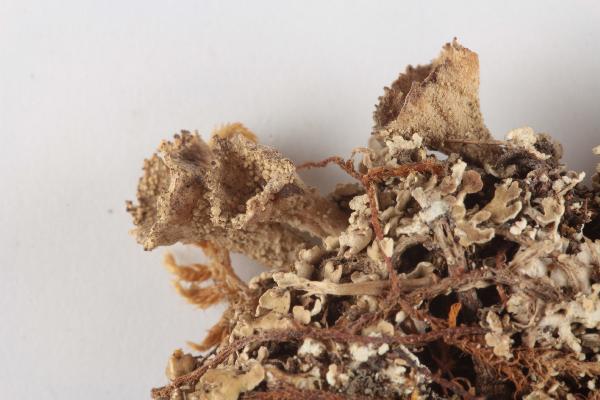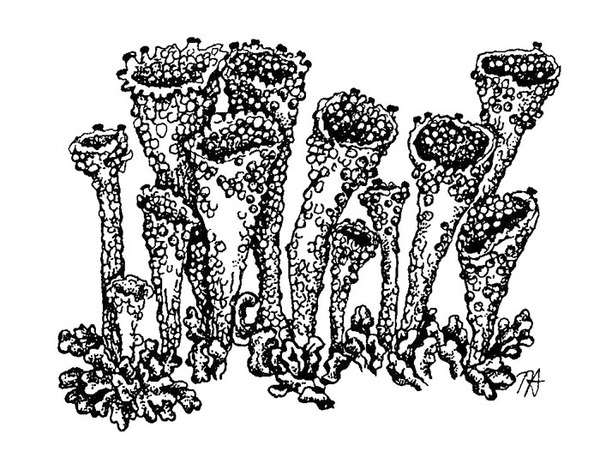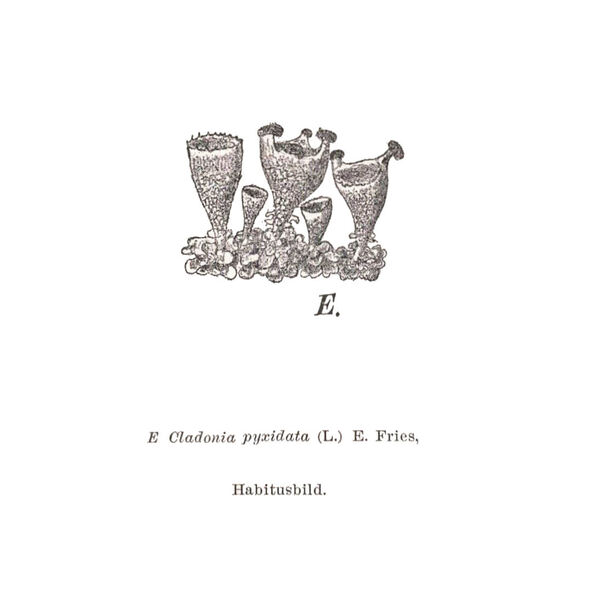Cladonia pyxidata (L.) Hoffm. f. pyxidata
Deutschl. Fl., 2: 121, 1796. Basionym: Lichen pyxidatus L. - Sp. Pl., 2: 1151, 1753.
Synonyms: Cladonia chlorophaea auct. p.p.; Cladonia monomorpha Aptroot, Sipman & Herk; Cladonia neglecta (Flörke) Spreng.; Cladonia pyxidata (L.) Hoffm.
Distribution: N - VG, Frl (Tretiach 1996, Tretiach & Molaro 2007), Ven (Nimis 1994, Nascimbene & Caniglia 1997, 2002c, 2003c, Caniglia & al. 1999, Nascimbene 2002, 2005c, 2008, 2008c, 2011, Nascimbene & al. 2005b, 2006, 2006c, 2006e, 2007, 2009c, 2010b, Nascimbene & Marini 2007, Brackel 2013, Giovagnoli & Tasinazzo 2014), TAA (Caniglia & al. 2002, Nascimbene & Caniglia 2002c, Nascimbene 2001b, 2003, 2005b, 2006b, 2006c, 2013, 2014, Nascimbene & al. 2006e, 2007b, 2008c, 2008b, 2013b, 2022, Lang 2009, Bilovitz & al. 2014, 2014b, Nascimbene & Marini 2015, Nimis & al. 2015, Trindade & al. 2021), Lomb (Rivellini 1994, Rivellini & Valcuvia 1996, Alessio & al. 1995, Rossi & al. 1998, Roella 1999, Valcuvia & al. 2000d, De Vita & Valcuvia 2004, Dalle Vedove & al. 2004, Nascimbene & al. 2006e, Furlanetto 2010, Brackel 2010, 2013, Gheza & al. 2015, 2020, 2022, 2023, Gheza 2015, 2019, 2019b), Piem (Morisi & Sereno 1995, Piercey-Normore & De Priest 2001, Isocrono & al. 2003, 2004, 2006, Hafellner & al. 2004, Morisi 2005, Isocrono & Piervittori 2008, Gheza 2015, 2020, Gheza & Nascimbene 2024), VA (Borlandelli & al. 1996, Piervittori & Isocrono 1997, 1999, Valcuvia 2000, Piervittori & al. 2001, Matteucci & al. 2008, 2008c, 2015c, Isocrono & al. 2008, Furlanetto 2010), Emil (Scarpa 1993, Ferrari & al. 1994, Nimis & al. 1996, Dalle Vedove & al. 2002, Tretiach & al. 2008, Benesperi 2009, Fariselli & al. 2020), Lig (Brunialti & al. 1999, Giordani & Incerti 2008, Gheza & al. 2020, Giordani & al. 2025). C - Tosc (Tretiach & Nimis 1994, Loppi & Putortì 1995b, 2001, Loppi & al. 1996b, 1997b, 1998, Putortì & Loppi 1999, 1999b, Putortì & al. 1999, Benesperi 2000a, 2006, 2011, Benesperi & al. 2007, Lastrucci & al. 2004c, 2009, Pasquinelli & al. 2009, 2013, Pasquinelli & Puccini 2010, Brackel 2015, Gheza & al. 2020), Marc (Nimis & Tretiach 1999, Brackel 2015), Umb (Ravera 1998, Nimis & Tretiach 1999, Panfili 2000b, 2007, Ravera & al. 2006, Genovesi 2011, Brackel 2015), Laz (Massari & Ravera 2002, Nimis & Tretiach 2004, Genovesi & al. 2011, Zucconi & al. 2013, Brackel 2015), Abr (Nimis & Tretiach 1999, Brackel 2015,Caporale & al. 2016, Corona & al. 2016, Di Nuzzo & al. 2021, Gheza & al. 2021, Vallese & al. 2022), Mol (Garofalo & al. 1999, Caporale & al. 2008, Nimis & Tretiach 1999, Genovesi & Ravera 2014, Brackel 2020), Sar (Nöske 2000, Loi & al. 2000, Zedda 2002, 2002b, Zedda & Sipman 2001 Zedda & al. 2010, Rizzi & al. 2011, Cogoni & al. 2011, Cossu 2013, Neuwirth 2018, Di Nuzzo & al. 2022). S - Camp (Garofalo & al. 1999, 2010, Ricciardi & al. 2000, Aprile & al. 2002, 2003, 2003b, Nimis & Tretiach 2004, Catalano & Aprile 2008, Catalano & al. 2016), Pugl (Garofalo & al. 1999, Nimis & Tretiach 1999, Durini & Medagli 2002, 2004, Brackel 2011,Gianfreda & Matino 2020), Bas (Bartoli & Puntillo 1998, Nimis & Tretiach 1999, Potenza 2006, Fascetti & al. 2006, Potenza & al. 2010), Cal (Puntillo 1996, Puntillo & Puntillo 2004, Incerti & Nimis 2006, Brackel & Puntillo 2016), Si (Nimis & al. 1994, Ottonello & Salone 1994, Ottonello & al. 1994, 2011, Poli & al. 1995, Ottonello 1996, Grillo 1996, 1998, Ottonello & Romano 1997, Grillo & al. 2002, Merlo 2004, 2004b, Grillo & Caniglia 2004, 2006, Caniglia & al. 2005, Falco Scampatelli 2005, Brackel 2008b, Gianguzzi & al. 2009, Liistro & Cataldo 2011, Cataldo & Minissale 2015, Puglisi & Cataldo 2019, Campisi & al. 2020).
Description: Primary thallus squamulose, persistent, the squamules middle-sized, 2-7 mm long (rarely more) and up to 4 mm wide (usually less), thin (less than 0.4 mm thick), irregularly lobed or incised, the tips rounded, mostly ascending, never forming a subrosulate crust, greenish grey above, white beneath. Podetia goblet-shaped, hollow inside, greenish grey, esquamulose, 0.5-3(-5) cm tall, with broad cups gradually tapering into short stalks, the cups regular or proliferating from margin, with contiguous to scattered, corticate granules or peltate squamules (schizidia), especially inside the cups. Apothecia frequent, brown, convex. Asci 8-spored, clavate, thickened at apex, with a K/I+ blue tholus and a K/I+ strongly blue outer gelatinous sheath, Cladonia-type. Ascospores 1-celled, hyaline, ellipsoid. Pycnidia dark, semi-immersed on the margins of cups, with a colourless jelly. Conidia hyaline, curved. Photobiont chlorococcoid. Spot tests and chemistry: four chemotypes are known from Europe (all of them C-, KC-, UV-): K- or K+ yellowish slowly turning brown, P+ red (fumarprotocetraric acid complex, often with additional physodalic acid). 2) K+ yellow, P+ red (atranorin and fumarprotocetraric acid complex). 3) K- or K+ yellowish slowly turning brown, P+ red (fumarprotocetraric acid complex and psoromic acid), 4) K+ yellow, P+ red (atranorin, fumarprotocetraric and psoromic acids). Chemotype 1) is the most frequent.Note: a widespread, very polymorphic, holarctic species with a wide altitudinal-latitudinal range and a wide ecological amplitude, found both on soil, lignum and bark at the base of trees, which is common throughout in Italy. In its present circumscription, however, the species appears to be heterogeneous. According to Stenroos & al. (2019) molecular data do not support the distinction of C. monomorpha (see also Burgaz & al. 2020). The record of C. borbonica Nyl. from Calabria by Puntillo (1995, 1996) refers to a form of the C. pyxidata-complex (Ahti in litt.).
Growth form: Fruticose
Substrata: bark, lignum, soil, terricolous mosses, and plant debris
Photobiont: green algae other than Trentepohlia
Reproductive strategy: mainly sexual
Commonnes-rarity: (info)
Alpine belt: rather common
Subalpine belt: extremely common
Oromediterranean belt: very common
Montane belt: extremely common
Submediterranean belt: extremely common
Padanian area: rather rare
Humid submediterranean belt: extremely common
Humid mediterranean belt: extremely common
Dry mediterranean belt: rare
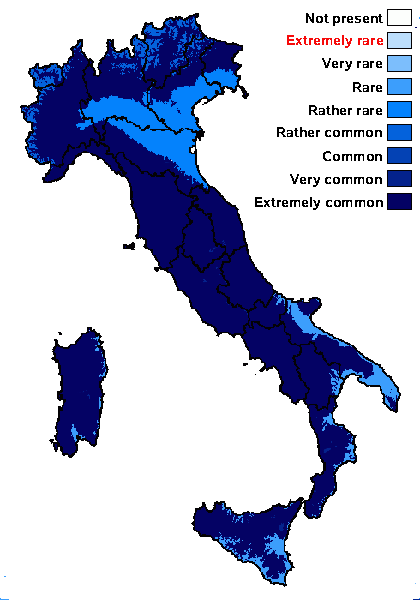
Predictive model
Herbarium samples
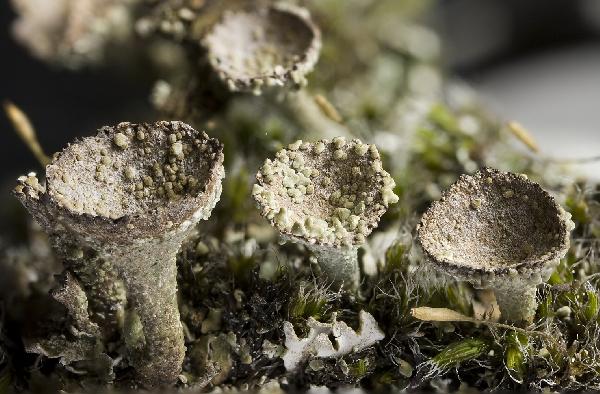
Ulrich Kirschbaum CC BY-SA 4.0 - Source: https://www.thm.de/lse/ulrich-kirschbaum/flechtenbilder
Central Europe; Germany: Hesse.
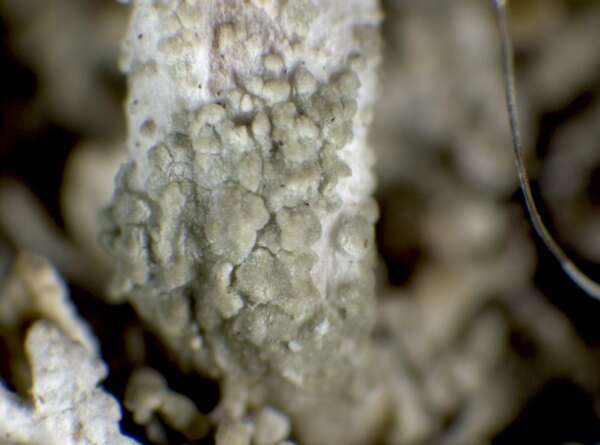

P.L. Nimis; Owner: Department of Life Sciences, University of Trieste
Herbarium: TSB (33675)
2001/12/01
detail of cortex
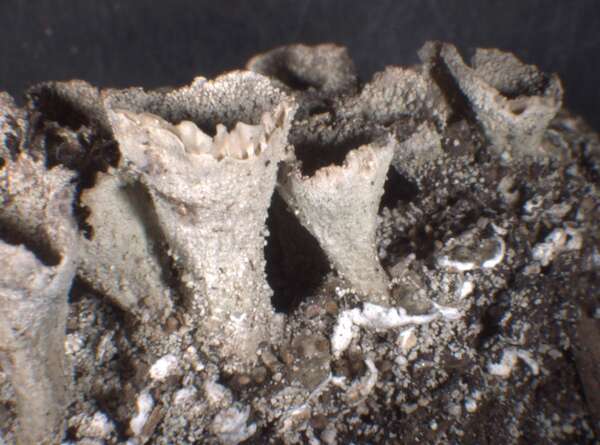

P.L. Nimis; Owner: Department of Life Sciences, University of Trieste
Herbarium: TSB (20423)
2001/11/04


A. Moro; Owner: Department of Life Sciences, University of Trieste
Sicilia, TP, Isola di Marettimo
2008.04.05
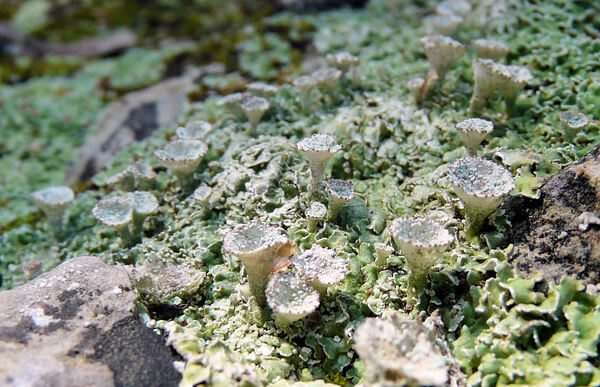

A. Moro; Owner: Department of Life Sciences, University of Trieste
Sicilia, TP, Isola di Marettimo
2008.04.05


A. Moro; Owner: Department of Life Sciences, University of Trieste
Sicilia, TP, Isola di Marettimo
2008.04.05
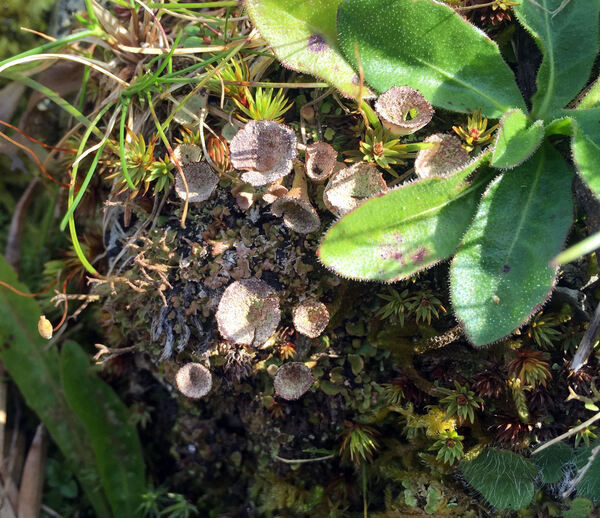

P.L. Nimis; Owner: Department of Life Sciences, University of Trieste
Italy, Veneto, Belluno, Casera Razzo, 1900 m
09.09.2016


P.L. Nimis; Owner: Department of Life Sciences, University of Trieste
Italy, Friuli Venezia Giulia, Udine, Lago di Sauris, Bosco Flobia, Ampezzo Carnico, 1000 m
09.09.2016
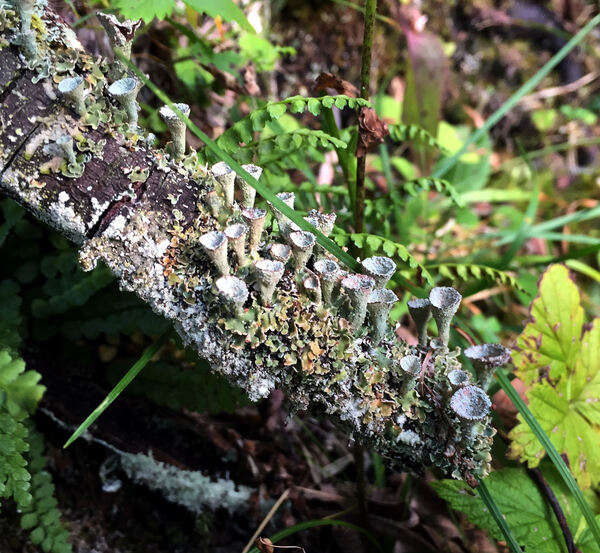

P.L. Nimis; Owner: Department of Life Sciences, University of Trieste
Italy, Friuli Venezia Giulia, Udine, Ampezzo Carnico, 650 m
09.09.2016
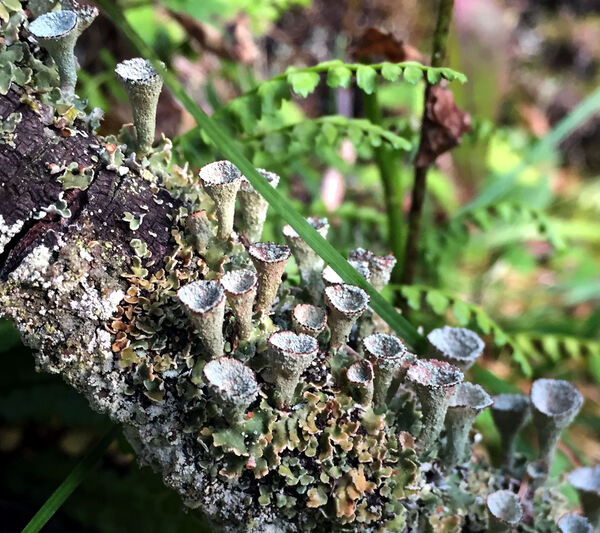

P.L. Nimis; Owner: Department of Life Sciences, University of Trieste
Italy, Friuli Venezia Giulia, Udine, Ampezzo Carnico, 650 m
09.09.2016


Andrea Moro; Owner: Department of Life Sciences, University of Trieste
Italy, Friuli Venezia Giulia, Udine, Lago di Sauris, Bosco della Stua, Carnic Alps (Ampezzo Carnico) 1000 m; altitude: 1000 m
12/08/2017
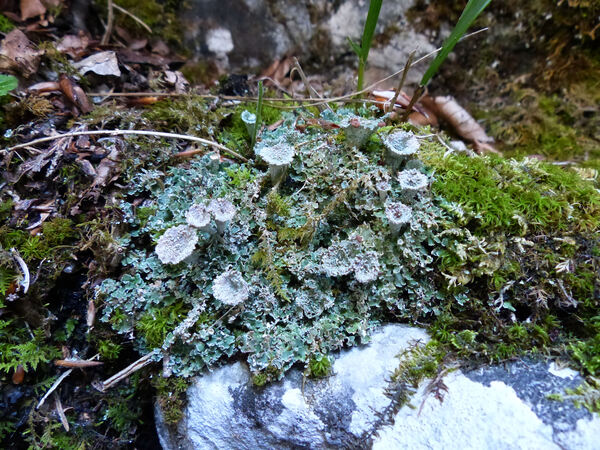

Andrea Moro; Owner: Department of Life Sciences, University of Trieste
Italy, Friuli Venezia Giulia, Udine, Lago di Sauris, Bosco della Stua, Carnic Alps (Ampezzo Carnico) 1000 m; altitude: 1000 m
12/08/2017
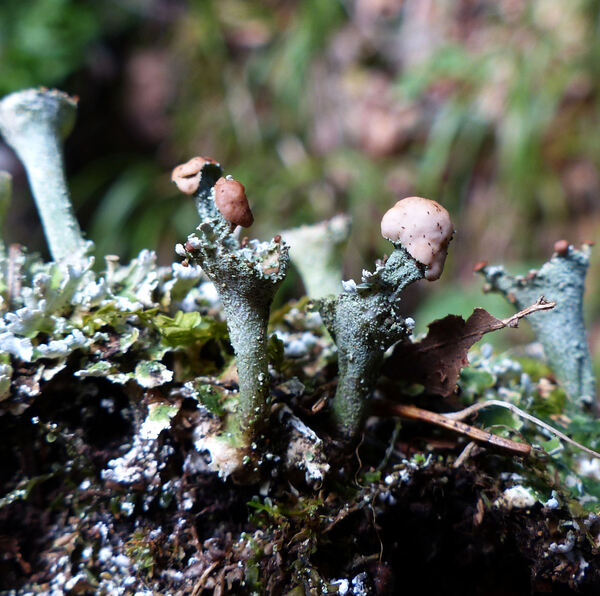

Andrea Moro; Owner: Department of Life Sciences, University of Trieste
Italy, Friuli Venezia Giulia, Udine, Lago di Sauris, Bosco della Stua, Carnic Alps (Ampezzo Carnico) 1000 m; altitude: 1000 m
12/08/2017
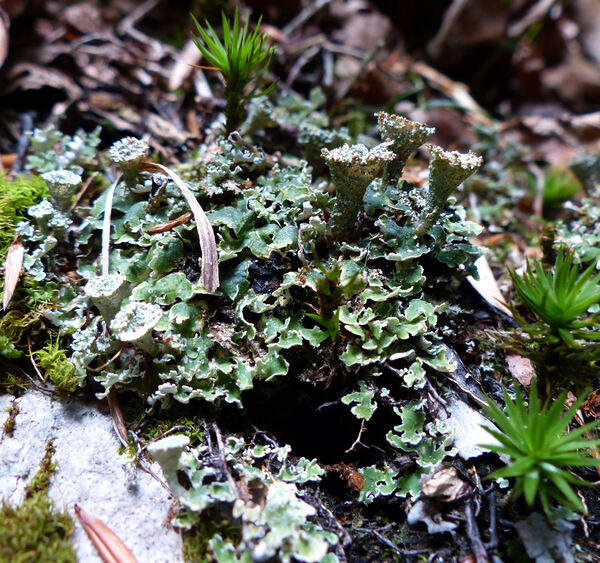

Andrea Moro; Owner: Department of Life Sciences, University of Trieste
Italy, Friuli Venezia Giulia, Udine, Lago di Sauris, Bosco della Stua, Carnic Alps (Ampezzo Carnico) 1000 m; altitude: 1000 m
12/08/2017
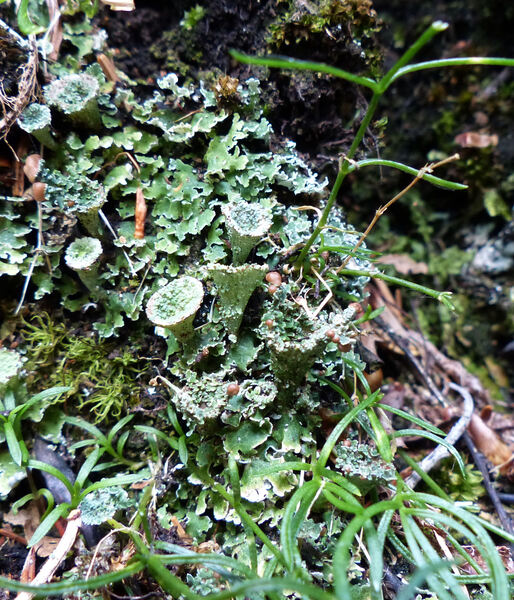

Andrea Moro; Owner: Department of Life Sciences, University of Trieste
Italy, Friuli Venezia Giulia, Udine, Lago di Sauris, Bosco della Stua, Carnic Alps (Ampezzo Carnico) 1000 m; altitude: 1000 m
12/08/2017
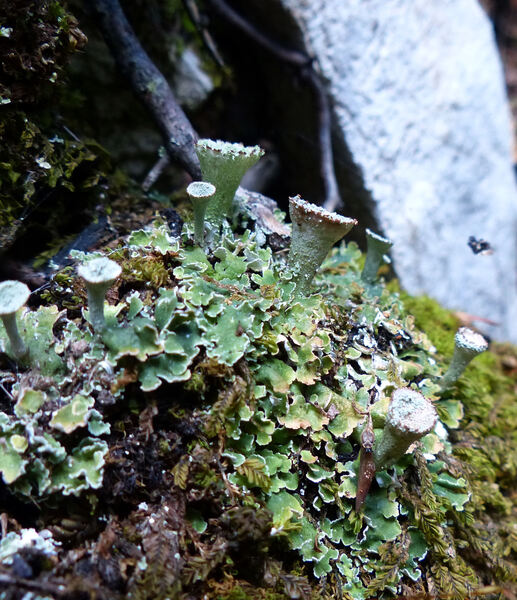

Andrea Moro; Owner: Department of Life Sciences, University of Trieste
Italy, Friuli Venezia Giulia, Udine, Lago di Sauris, Bosco della Stua, Carnic Alps (Ampezzo Carnico) 1000 m; altitude: 1000 m
12/08/2017
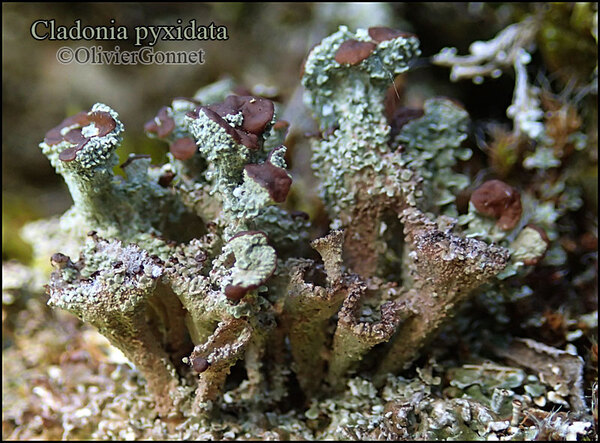
Courtesy Danièle et Olivier Gonnet - Source: https://www.afl-lichenologie.fr/Photos_AFL/Photos_AFL_C/Textes_C5/Cladonia_pyxidata.htm
Monte Stello - Corse
08/2010
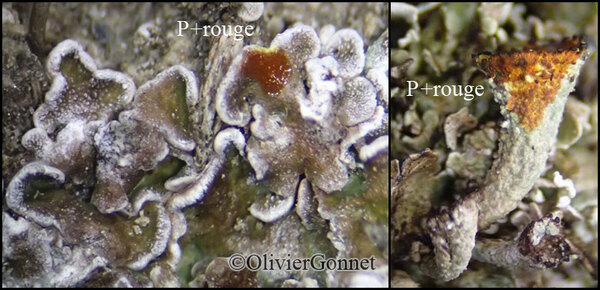
Courtesy Danièle et Olivier Gonnet - Source: https://www.afl-lichenologie.fr/Photos_AFL/Photos_AFL_C/Textes_C5/Cladonia_pyxidata.htm
Monte Stello - Corse
08/2010
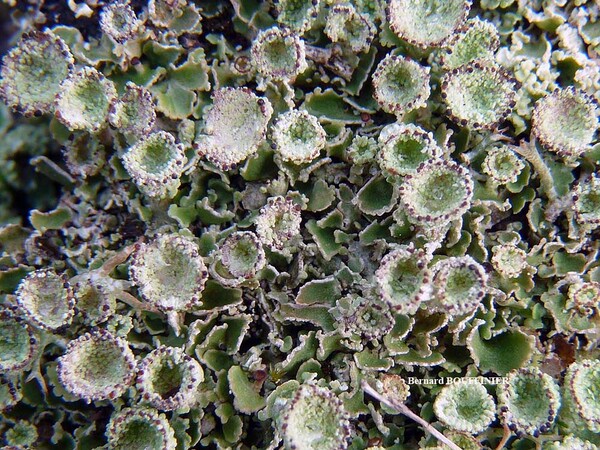
Bernard Bouffinier - Source: http://www.lichensmaritimes.org/index.php?task=fiche&lichen=483&lang=en
France, Crozon
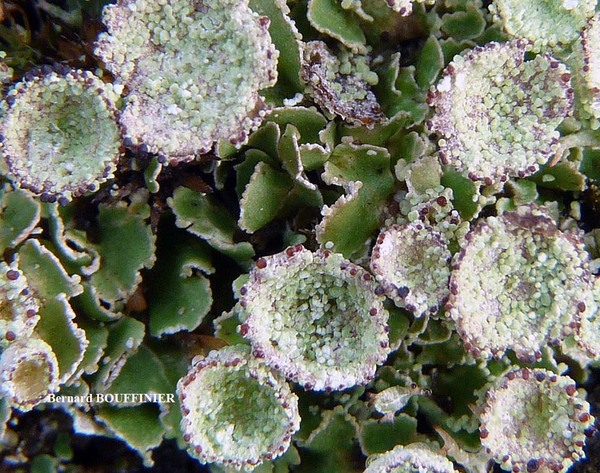
Bernard Bouffinier - Source: http://www.lichensmaritimes.org/index.php?task=fiche&lichen=483&lang=en
France, Crozon
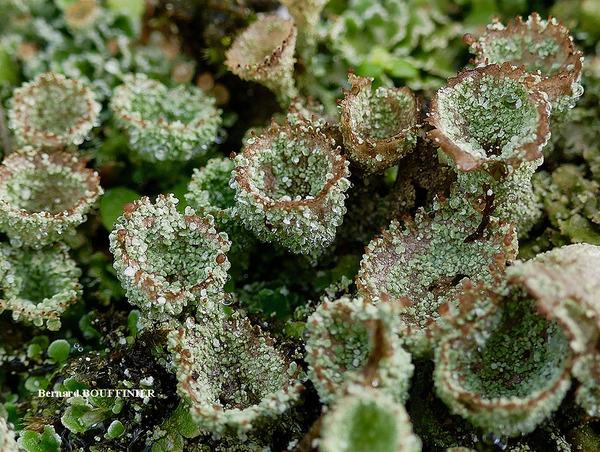
Bernard Bouffinier - Source: http://www.lichensmaritimes.org/index.php?task=fiche&lichen=483&lang=en
France, Pointe de Dinan
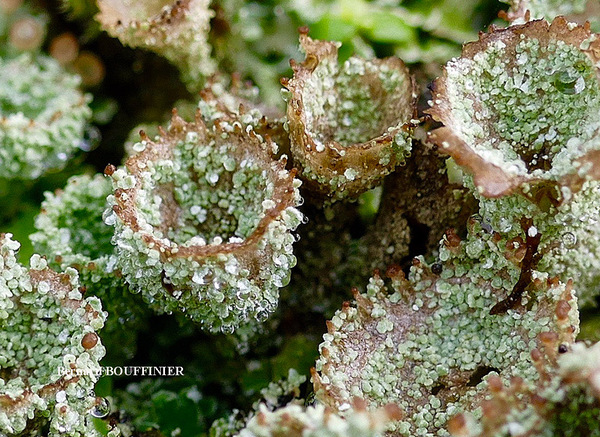
Bernard Bouffinier - Source: http://www.lichensmaritimes.org/index.php?task=fiche&lichen=483&lang=en
France, Pointe de Dinan
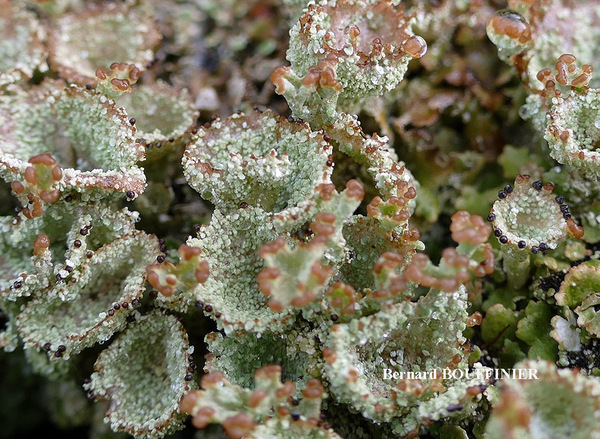
Bernard Bouffinier - Source: http://www.lichensmaritimes.org/index.php?task=fiche&lichen=483&lang=en
France, Pointe de Dinan
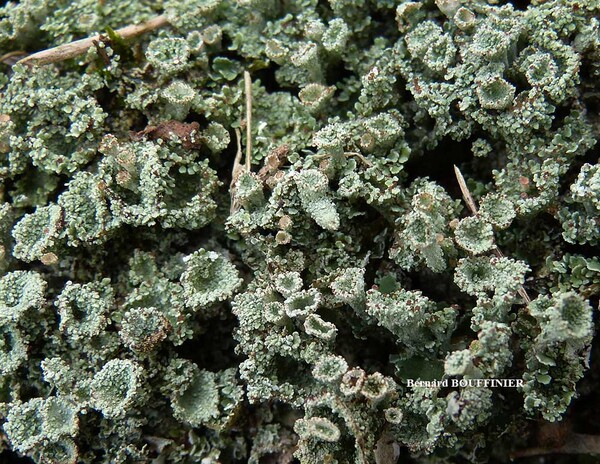
Bernard Bouffinier - Source: http://www.lichensmaritimes.org/index.php?task=fiche&lichen=483&lang=en
France, Rosnoen
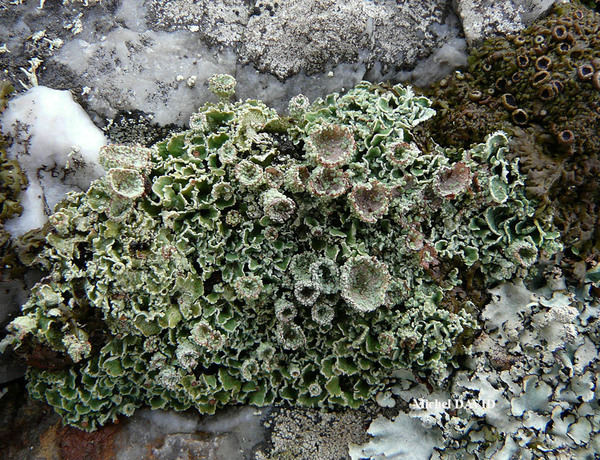
Michel David - Source: http://www.lichensmaritimes.org/index.php?task=fiche&lichen=483&lang=en
France, Pointe de Pen-Hir

Michel David - Source: http://www.lichensmaritimes.org/index.php?task=fiche&lichen=483&lang=en
France, Pointe de Pen-Hir
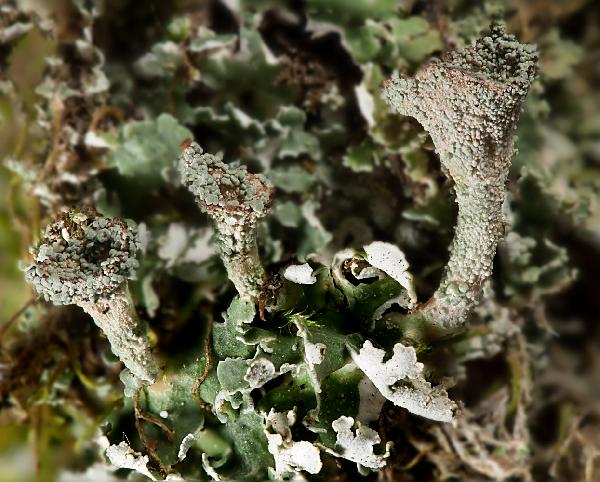
Ulrich Kirschbaum CC BY-SA 4.0 - Source: https://www.thm.de/lse/ulrich-kirschbaum/flechtenbilder
Central Europe; Germany; Bavaria: Allgäu.
Growth form: Fruticose
Substrata: bark, lignum, soil, terricolous mosses, and plant debris
Photobiont: green algae other than Trentepohlia
Reproductive strategy: mainly sexual
Commonnes-rarity: (info)
Alpine belt: rather common
Subalpine belt: extremely common
Oromediterranean belt: very common
Montane belt: extremely common
Submediterranean belt: extremely common
Padanian area: rather rare
Humid submediterranean belt: extremely common
Humid mediterranean belt: extremely common
Dry mediterranean belt: rare

Predictive model
| Herbarium samples |

Ulrich Kirschbaum CC BY-SA 4.0 - Source: https://www.thm.de/lse/ulrich-kirschbaum/flechtenbilder
Central Europe; Germany: Hesse.


P.L. Nimis; Owner: Department of Life Sciences, University of Trieste
Herbarium: TSB (33675)
2001/12/01
detail of cortex


P.L. Nimis; Owner: Department of Life Sciences, University of Trieste
Herbarium: TSB (20423)
2001/11/04


A. Moro; Owner: Department of Life Sciences, University of Trieste
Sicilia, TP, Isola di Marettimo
2008.04.05


A. Moro; Owner: Department of Life Sciences, University of Trieste
Sicilia, TP, Isola di Marettimo
2008.04.05


A. Moro; Owner: Department of Life Sciences, University of Trieste
Sicilia, TP, Isola di Marettimo
2008.04.05


P.L. Nimis; Owner: Department of Life Sciences, University of Trieste
Italy, Veneto, Belluno, Casera Razzo, 1900 m
09.09.2016


P.L. Nimis; Owner: Department of Life Sciences, University of Trieste
Italy, Friuli Venezia Giulia, Udine, Lago di Sauris, Bosco Flobia, Ampezzo Carnico, 1000 m
09.09.2016


P.L. Nimis; Owner: Department of Life Sciences, University of Trieste
Italy, Friuli Venezia Giulia, Udine, Ampezzo Carnico, 650 m
09.09.2016


P.L. Nimis; Owner: Department of Life Sciences, University of Trieste
Italy, Friuli Venezia Giulia, Udine, Ampezzo Carnico, 650 m
09.09.2016


Andrea Moro; Owner: Department of Life Sciences, University of Trieste
Italy, Friuli Venezia Giulia, Udine, Lago di Sauris, Bosco della Stua, Carnic Alps (Ampezzo Carnico) 1000 m; altitude: 1000 m
12/08/2017


Andrea Moro; Owner: Department of Life Sciences, University of Trieste
Italy, Friuli Venezia Giulia, Udine, Lago di Sauris, Bosco della Stua, Carnic Alps (Ampezzo Carnico) 1000 m; altitude: 1000 m
12/08/2017


Andrea Moro; Owner: Department of Life Sciences, University of Trieste
Italy, Friuli Venezia Giulia, Udine, Lago di Sauris, Bosco della Stua, Carnic Alps (Ampezzo Carnico) 1000 m; altitude: 1000 m
12/08/2017


Andrea Moro; Owner: Department of Life Sciences, University of Trieste
Italy, Friuli Venezia Giulia, Udine, Lago di Sauris, Bosco della Stua, Carnic Alps (Ampezzo Carnico) 1000 m; altitude: 1000 m
12/08/2017


Andrea Moro; Owner: Department of Life Sciences, University of Trieste
Italy, Friuli Venezia Giulia, Udine, Lago di Sauris, Bosco della Stua, Carnic Alps (Ampezzo Carnico) 1000 m; altitude: 1000 m
12/08/2017


Andrea Moro; Owner: Department of Life Sciences, University of Trieste
Italy, Friuli Venezia Giulia, Udine, Lago di Sauris, Bosco della Stua, Carnic Alps (Ampezzo Carnico) 1000 m; altitude: 1000 m
12/08/2017

Courtesy Danièle et Olivier Gonnet - Source: https://www.afl-lichenologie.fr/Photos_AFL/Photos_AFL_C/Textes_C5/Cladonia_pyxidata.htm
Monte Stello - Corse
08/2010

Courtesy Danièle et Olivier Gonnet - Source: https://www.afl-lichenologie.fr/Photos_AFL/Photos_AFL_C/Textes_C5/Cladonia_pyxidata.htm
Monte Stello - Corse
08/2010

Bernard Bouffinier - Source: http://www.lichensmaritimes.org/index.php?task=fiche&lichen=483&lang=en
France, Crozon

Bernard Bouffinier - Source: http://www.lichensmaritimes.org/index.php?task=fiche&lichen=483&lang=en
France, Crozon

Bernard Bouffinier - Source: http://www.lichensmaritimes.org/index.php?task=fiche&lichen=483&lang=en
France, Pointe de Dinan

Bernard Bouffinier - Source: http://www.lichensmaritimes.org/index.php?task=fiche&lichen=483&lang=en
France, Pointe de Dinan

Bernard Bouffinier - Source: http://www.lichensmaritimes.org/index.php?task=fiche&lichen=483&lang=en
France, Pointe de Dinan

Bernard Bouffinier - Source: http://www.lichensmaritimes.org/index.php?task=fiche&lichen=483&lang=en
France, Rosnoen

Michel David - Source: http://www.lichensmaritimes.org/index.php?task=fiche&lichen=483&lang=en
France, Pointe de Pen-Hir

Michel David - Source: http://www.lichensmaritimes.org/index.php?task=fiche&lichen=483&lang=en
France, Pointe de Pen-Hir

 INDEX FUNGORUM
INDEX FUNGORUM
 GBIF
GBIF
 DOLICHENS
DOLICHENS
